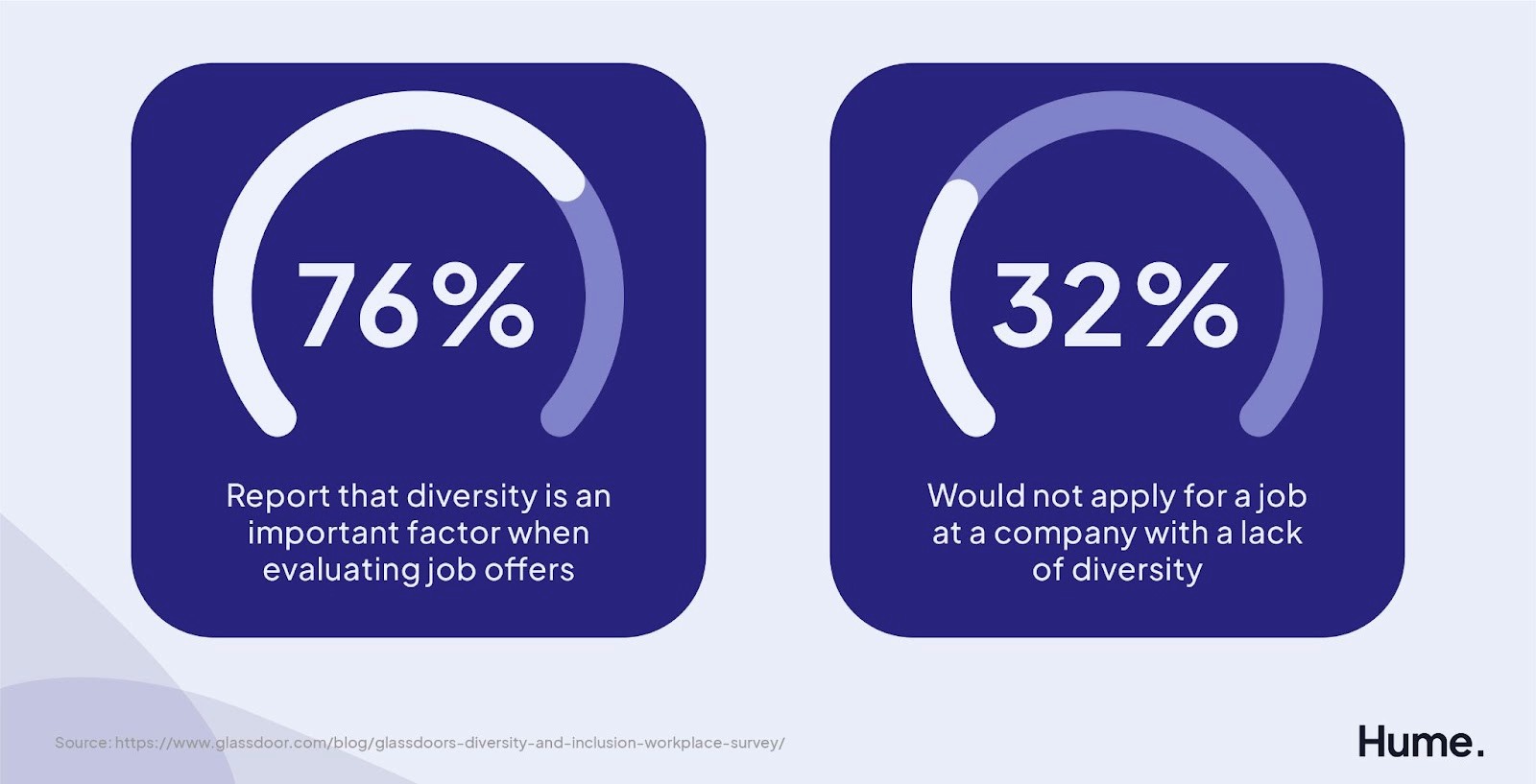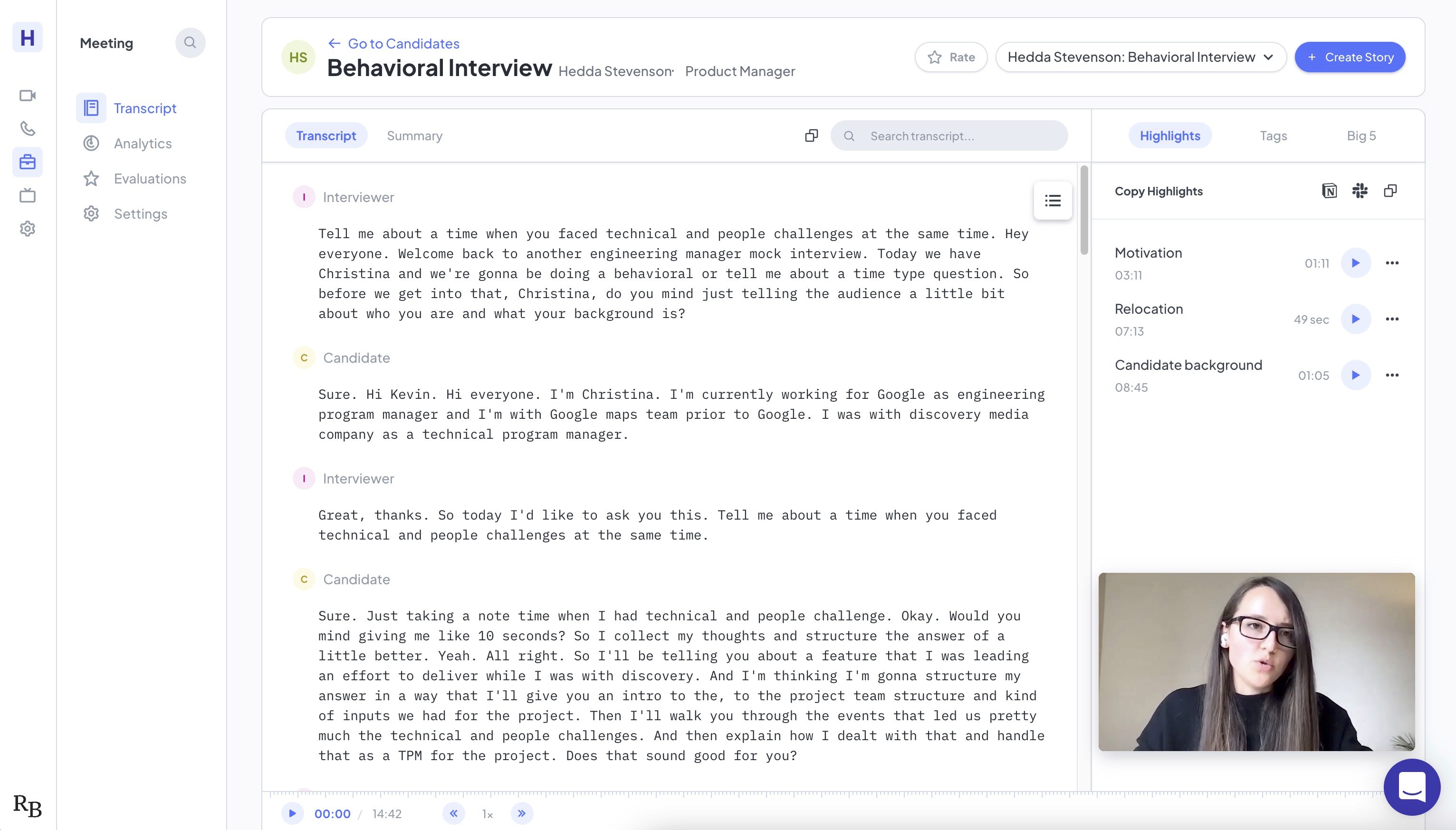Hiring and Job Application Statistics Every Recruiter Should Know
Hiring is challenging in today’s tight job market. These job application statistics give you insights to refine your recruitment strategy and attract top talents.
5.0

Add an AI assistant to your interviews
Start with 5 interviews for free
Already have an account?
Log in
Finding top talent is, of course, challenging in today’s tight job market.
The low unemployment rate means you have to compete with other employers to attract new hires, but the fast-paced and complex hiring process can be overwhelming even for the most experienced HR professionals.
So why make it even more challenging by flying blind?
Reading up on the latest job search statistics can help you gain insights into job seekers' expectations, the latest human resource trends, and how to attract more qualified candidates to refine your recruiting strategy.
15 Top stats recruiter must know
Recruitment statistics can go a long way toward helping you better understand what candidates want and how your current hiring process measures up.
The following hiring statistics will show you the latest trends in recruiting and give you insight into improving your quality of hire over time.
Active job seekers make up only 30% of the workforce
70% of the global workforce consists of passive talent who aren’t actively job-seeking. But 87% of these passive candidates are open to new job opportunities.
Recruiters must find creative ways to get in front of these potential candidates and position their job openings favorably by understanding how to craft a stellar candidate experience.
The leading reason people change jobs is career opportunities
Americans change jobs for different reasons.
Top drivers include advancement opportunities, compensation, professional development, and improved work/life balance. Meanwhile, the U.S. Bureau of Labor Statistics (BLS) found that low pay, inconvenient working hours, and long commute are among the top reasons candidates turn down job offers.
Pay spurs acceptance, but candidates will accept lower pay for more flexibility
Job seekers are willing to sacrifice up to 12% of their salary for better training and flexibility. 37% of candidates would take a pay cut for more upskilling opportunities.
Highlighting these benefits in your job postings and on the company website can attract more job applicants.

60% of job seekers use online job boards and career sites
Meanwhile, 56% of people leverage their social media professional network, and 50% use word of mouth in their job-hunting process.
Identifying the most effective channels and crafting attractive job descriptions to get in front of qualified candidates is more important than ever.
LinkedIn is the most popular channel for job hunters
With over 66 million monthly active users in the U.S., the professional networking platform is one of the most effective talent pools for almost any industry. Other popular career sites include Indeed.com, Glassdoor.com, and CareerBuilder.com.
Referrals are a main source of quality hires
Expand your talent pool by tapping into your employees’ professional and social networks.
What motivates people to refer? 35% of employees do so to help their friends, while 32% want to support their employers. 26% do it to be considered a valuable colleague, and only 6% refer for money and recognition.
Candidates value diversity and inclusion
76% of job seekers say that a diverse workforce is a critical consideration when evaluating job offers. Meanwhile, 58% say that they won’t give preferential treatment to a company with a pay gap (e.g., gender, race) when applying for a job.
Hiring managers should communicate their companies’ efforts and policies in promoting equality.
Learn more about improving diversity through reducing interview bias from our guide — Interview Bias: A Comprehensive Guide.

Benefits only account for 12% of employee satisfaction
Candidates prefer a workplace with strong leadership and a company culture that resonates with them. 73% of survey respondents would only apply to a company that has similar values as they do.
Getting clear about your employer brand and promoting it through various touchpoints is key to attracting great candidates.
86% of job seekers look up company reviews and ratings
68% of Millennials, 54% of Gen-Xers, and 48% of Boomers visit a company’s social media profiles to evaluate it as an employer. A strong employer brand can help reduce the cost per hire by up to 50%.
Your company website, social media properties, and other candidate touchpoints should communicate your value and company culture.
A frictionless application process attracts more applicants
Many Gen Z and millennials candidates conduct job searches and apply for job openings with their mobile devices. An easy-to-fill online form helps boost the application rate by 2.3%, while a mobile-friendly hiring process can help attract 11.6% more applicants.
Employees prefer a remote work option
86% of employees say they want the option to work from home after offices reopen post-pandemic. 67% of employers provide flexible work arrangements as more employees demand location and work schedule flexibility.
Virtual recruitment is here to stay
Virtual recruitment practices have become part of the interview process. 59% of recruiters interview candidates via video and 65% extend offers without meeting candidates in person.
Talent leaders should use an intelligent interview platform to streamline the candidate experience and shorten time to hire to secure the best candidates.
The average time to hire should be around two to four weeks
Once top candidates are identified, the recruitment process should proceed with a healthy sense of urgency and conclude within a month.
HR professionals must find ways to streamline their hiring workflows to ensure that they capture high-quality candidates. One great way to do so is through adding smart technology to the interviewing process. For example, with Hume, interviewers can transcribe interview recordings, highlight insights, tag key moments, and instantly share it all with other hiring personnel in the company to facilitate fast decision-making.
Candidate experience is key to engagement
49% of candidates decline a job offer because of a poor recruitment experience.
A candidate journey that accounts for every touchpoint along the recruitment process — from job listings to your company’s digital presence, the job interview process, and post-interview feedback — is essential for attracting the best candidates.
Constructive interview feedback is critical
94% of candidates want to receive interview feedback. In fact, they’re four times more likely to consider a company for a future opportunity when it offers constructive comments.
Use an applicant tracking system to help you stay on top of all the candidate communications throughout the interviewing process.
How to refine your recruitment process to attract more talents
Attracting quality candidates is challenging. But getting them to apply to your job postings is just the first step.
Keeping candidates engaged throughout the hiring process so they’re more likely to accept a job offer is also quite the feat.
Top talent typically goes on and off the job market in a matter of 10 days. You must create a modern and seamless candidate experience to move the hiring process along to avoid losing your best candidate to other companies.
Meanwhile, you have to meet fast-evolving candidate expectations by analyzing granular data from the recruitment process and refining every step of the candidate's journey to stay relevant.
With so many moving parts, how can you ensure that nothing falls through the cracks without missing a beat?
Automate a top-notch candidate experience with Hume

Hume’s platform provides an interview companion that applies AI to help interviewers record, transcribe, summarize, and share interview interactions.
With Hume, remote, digital interviews can finally be compared and reviewed with all the speed and clarity of in-person interviews. That means your organization can fully leverage interview data to inform equitable hiring decisions — no need to rely on memory or be distracted by innate biases.
You can also turn Hume inward to analyze your interviewing process for consistency. Easily create and share coaching playlists to drive consistent, company-wide improvements when it comes to your interviewing flow.
If you’re excited to integrate Hume with your ATS systems, interviewer calendars, and video conference software, all you have to do is visit our homepage to sign up for our waitlist.
Follow Hume on LinkedIn in the meantime for updates on how to use our interview companion as well as other tactics to upgrade your candidate experience.
Imagine transforming every interview into a strategic advantage. Dive deep into every conversation, free from the distraction of note-taking. This isn't just wishful thinking – with Aspect, it's how you'll redefine your hiring process.
Beatriz F
People Success Specialist
Absolutely game-changing for busy recruiters!
The summary, the Q&A feature and the ATS integration have boosted my productivity and lowered the context-switching stress, the analytics provided allowed for me and my team to have full visibility over our stats, and Aspect's team couldn't be more helpful, friendly and accessible!
More Content On Talent Acquisition

